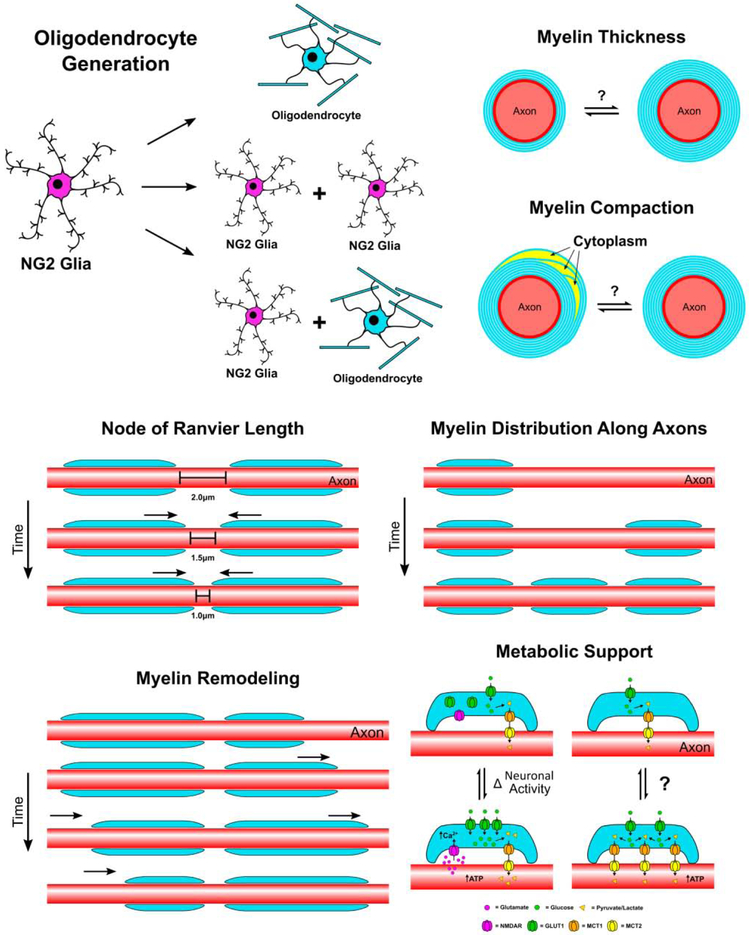Figure 1: Forms of myelin plasticity.
Myelinating oligodendrocytes maintain the capacity for multiple forms of plasticity in the adult central nervous system. First NG2 glia act as an endogenous source of new oligodendrocytes while maintaining a resident population via self-renewal. This allows for population homeostasis as NG2 glia would otherwise be depleted over time through direct differentiation into mature oligodendrocytes. In addition to direct differentiation, recently divided NG2 glia receive signals to differentiate or remain at the progenitor stage. After terminal differentiation, the myelin sheath is potentially capable of additional forms of structural and molecular plasticity including changes in myelin thickness, degrees of myelin compaction, length and positioning of the myelin sheath, and length of individual nodes of Ranvier. In addition to myelin structural changes, expression and distribution of molecules and transporters involved in providing metabolic support to myelinated axons have the potential to change in response to neuronal activity and throughout life. Each of these forms of plasticity, ranging from the generation of new oligodendrocytes do more subtle changes in node length, have the potential to modulate conduction velocity, neural circuitry, and axonal health.

